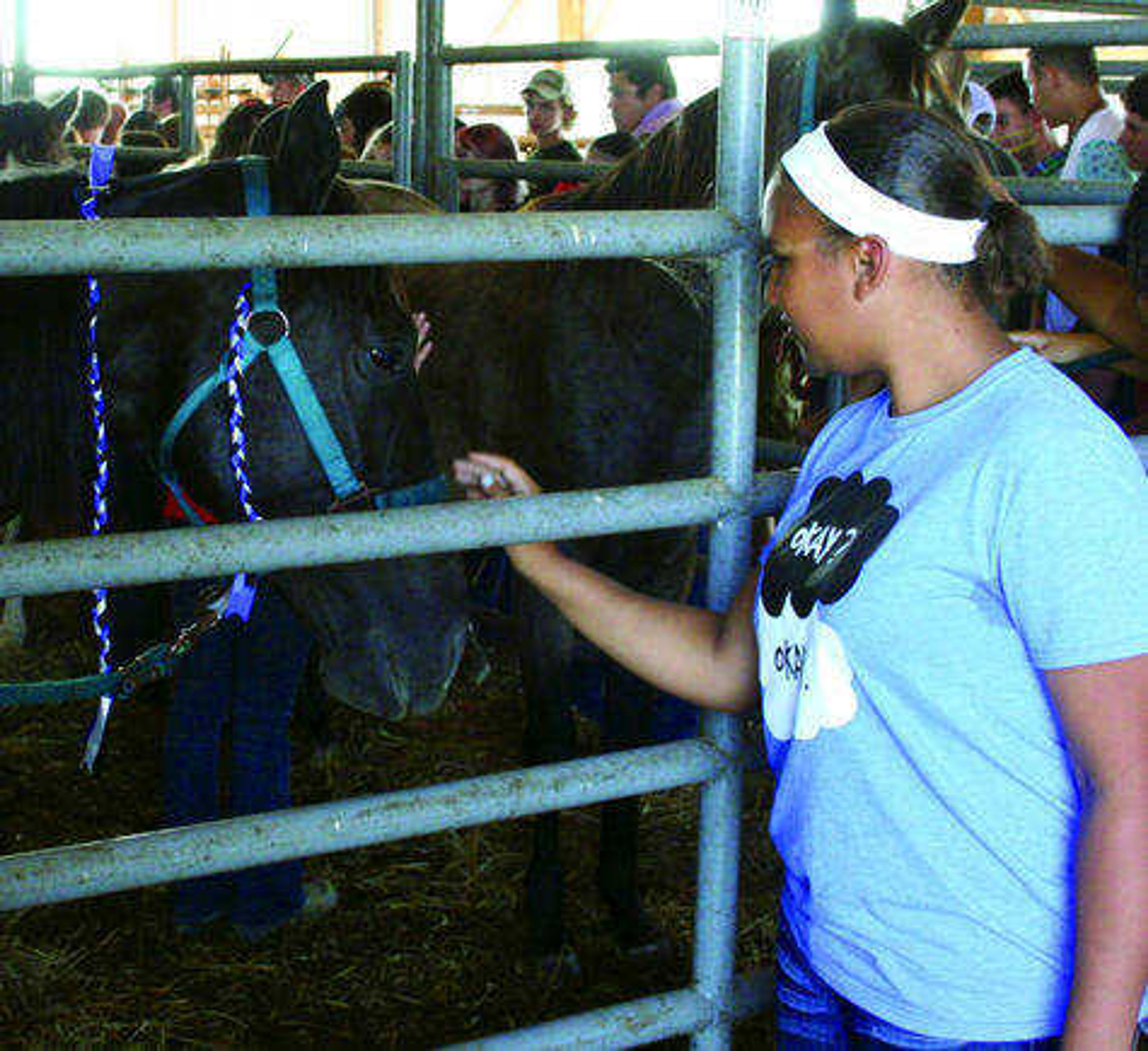Nearly 400 secondary agriculture students and members of the National FFA Organization from 22 local high schools learned all about the Southeast Missouri State University Department of Agriculture at the 12th annual Agriculture Education Field Day on Wednesday.
More than 100 Southeast agriculture students and faculty members led FFA students on tours of the Charles Nemanick Alternative Agriculture Gardens, as well as the David M. Barton Agriculture Research Center, highlighting the advancements and innovations the department has implemented recently.
The field day serves as an opportunity for high school students from Southeast Missouri and Southern Illinois to see what the Southeast Department of Agriculture has to offer.
At the Nemanick Gardens, students learned about the new fruit trees horticulture students have bred, including peacatome trees (crosses between a peach, apricot, and plum) and pluerry trees (crosses between a plum and a cherry).
Students also learned about the minimization of chemical use and runoff, which is a point of focus for the Nemanick Gardens, Dr. Sven Svenson said.
A native plant bioswale was recently added to the landscape at the Nemanick Gardens to soak up any extra nutrients or chemicals that may be in surface runoff water, keeping these out of the wastewater that leaves the facility. Surface water is directed to the bioswale, where it is then slowed down, giving the plants growing there a chance to soak in the nutrients, and filter out the chemicals, before the water then runs out of the bioswale much cleaner than it entered.
FFA students also saw the latest addition to the Nemanick Gardens, a butterfly garden, designed in a butterfly shape with plants that attract butterflies, giving migrating species such as Monarchs a stopping point on their long journey, according to greenhouse volunteer Bonnie Svenson.
At the David M. Barton Agriculture Research Center, students were wowed by the Unmanned Aerial Vehicle, more commonly called a drone.
"The drone was really interesting," Jackson FFA senior Teagan Schnurbusch said. "I had heard about them before and knew that SEMO had one, but I had never seen one in action before."
Dr. Indi Braden gave a demonstration about precision agriculture and technological advances agriculture has made, and how Southeast's UAV is helping them stay on the leading edge of technology in agriculture.
"Agriculture is taking a face change," Braden told the FFA students.
Braden said the UAV can be used to scout fields in order to detect nutrient deficiencies, wind or hail damage, or an infestation of bugs in certain parts of a field. A high definition camera can be attached to the UAV, taking pictures of a field from above, allowing a grower to see if a crop is turning a color it isn't supposed to be or if a storm leveled an interior section of the field.
Water quality is also a concern at the research center. A bioreactor was recently installed to filter water before it runs into Williams Creek along the eastern edge of the farm.
The bioreactor is basically a pond filled with wood chips, department chair Dr. Michael Aide said. Excess water flows to the bioreactor, where the wood chips filter out chemicals, and clean water runs out into Williams Creek.
"The water that comes out of that field is not going to have nitrogen, its clean water. It's water that you could possibly drink," Southeast agriculture instructor David Mauk said. "Agriculture needs to be concerned with the environment, and it is just awesome to see stuff like this being implemented."
Aide also spoke about the underground irrigation system in place at the farm. Water is pumped up and held in pipes three feet under the surface, so the crops in the 100-acre field have water available at all times.
Before this irrigation system was put in place, corn yields were averaging 120 bushels per acre, Aide said. But since the system was installed, yields have averaged nearly 200 bushels per acre.
Many of the FFA students that visit Southeast for the field day will be Southeast students within a few short years, so seeing what the department is coming up with gives them a glimpse of what they will be working on when they get here.
Schnurbusch plans to go to Southeast next year to major in animal science and hopes to keep bringing innovations to the center.
"I think they have a good setup here, but like they [Southeast students and faculty] said, they're always looking for new and improved ways to do things. I am eager to help them continue what they're doing," Schnurbusch said.
After lunch, which featured hamburgers made from cattle that were raised at the center, the annual watermelon seed spitting contest was held. About 25 high school and college students took part, and Bernie High School freshman Elijah Pittman walked away with the trophy after a spit of 32 feet.





